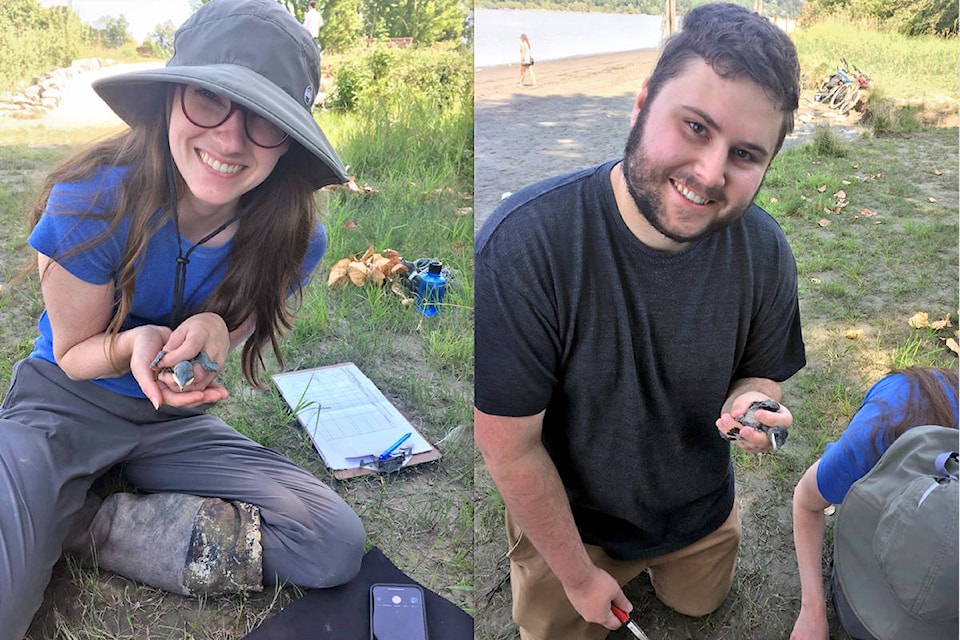After a runaway log boom destroyed a Purple Martin habitat on a Fraser River piling in 91ԭ�� on May 24, 91ԭ�� Environmental Partners Society (LEPS) Stewardship Coordinator Lisa Dreves expressed the hope the suddenly homeless birds might migrate to other, empty nest boxes nearby.
On Monday, July 26, a pleased Dreves, who is also president of the 91ԭ�� Field Naturalists (LFN) , was able to report the discovery of Purple Martin breeding pairs at the second site.
“LEPS Wetlands Workforce pod members checked out the 10 purple martin nest boxes at Meunch Bar today and found three of them occupied,” Dreves related.
”One box had a female sitting on eggs and the nestlings from the other two boxes were banded under strict supervision. The three breeding pairs were wondering what we were up to but happy to get back to feeding their babies after they were documented and returned to the boxes.”
Their new homes are downstream from the nesting boxes at Tavistock Point on Brae Island that were destroyed in May when a log boom got loose and toppled the piling.
READ ALSO: VIDEO: The moment when a log boom destroyed a 91ԭ�� bird habitat
“It is really exciting to see these boxes at Meunch Bar occupied already,” Dreves enthused.
“They were put up only last year thanks to local community volunteers under the guidance of Metro Vancouver Parks.”
Installed in 2012 by Metro Vancouver staff and monitored by the LFN, the wooden boxes in the demolished piling were home to a small colony of nesting Purple Martin pairs, part of a campaign to bring the Purple Martin back after the species lost almost all of their habitat to humans.
READ ALSO: Errant log boom blamed for destroying bird habitat in 91ԭ��
Said to be the , Purple Martins are known for their speed, agility, and their characteristic mix of rapid flapping and gliding flight pattern.
In the past, they nested in snags near fresh or salt water, but adapted to changing circumstances by adopting specialised nesting niches in harbour pilings, as well as in crevices in buildings.
Without human intervention, in the form of artificial nest boxes, it’s believed the species would probably have been lost to British Columbia some time ago.
By 1994, all known nesting pairs in the province were using artificial nest boxes, mainly built on pilings.
LEPS Wetlands Workforce is supported through the Healthy Watersheds Initiative, which is delivered by the Real Estate Foundation of BC and Watersheds BC, with financial support from the province as part of its $10-billion COVID-19 response.
Is there more to the story? Email: dan.ferguson@langleyadvancetimes.com
Like us on and follow us on .



